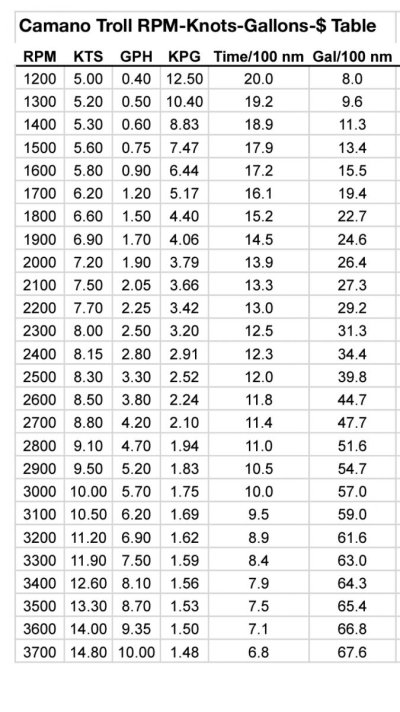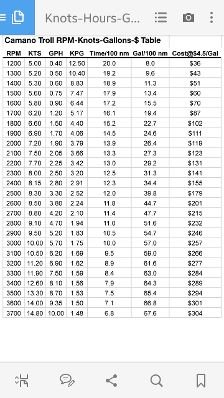toocoys
Guru
We were finally able to cruise our Chris Craft Commander twice this month. Our first trip was about 50nm round trip, and the other was around 70-75nm round trip. The first trip we faired pretty well there and back with a tank of gas, but the second trip we coasted into our home dock on fumes on the starboard tank.
After the second trip, my partner decided that we needed to sell it and look into something else a little later on. $500 in fuel this month was just too much to comprehend I guess. So I listed it, and if it sold we've been talking about going the trawler route. (I've always wanted a trawler anyway.)
However, after starting a few fuel efficiency conversations in various places and forums, the general consensus is that fuel efficiency ends up working out the same either way. Whether you're burning 2gph and taking a 12 hour trip, or you're burning 11gph and that same trip is only 2 hours.
So what I'd like to know is what kind of boat do you have, what engine(s) are in it, and what your fuel efficiency is at whatever your cruise speed is?
Thanks!
After the second trip, my partner decided that we needed to sell it and look into something else a little later on. $500 in fuel this month was just too much to comprehend I guess. So I listed it, and if it sold we've been talking about going the trawler route. (I've always wanted a trawler anyway.)
However, after starting a few fuel efficiency conversations in various places and forums, the general consensus is that fuel efficiency ends up working out the same either way. Whether you're burning 2gph and taking a 12 hour trip, or you're burning 11gph and that same trip is only 2 hours.
So what I'd like to know is what kind of boat do you have, what engine(s) are in it, and what your fuel efficiency is at whatever your cruise speed is?
Thanks!


